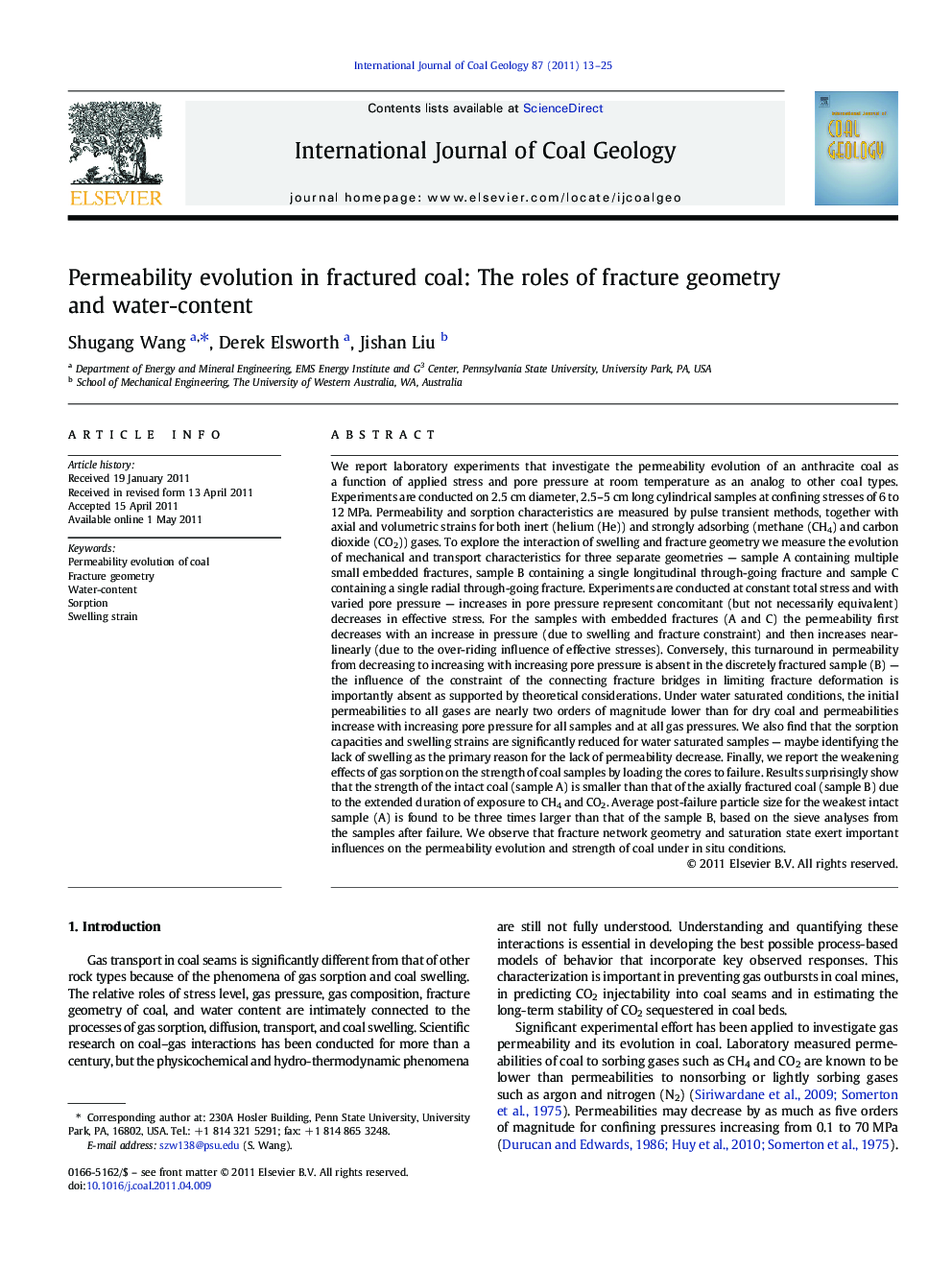| Article ID | Journal | Published Year | Pages | File Type |
|---|---|---|---|---|
| 1753831 | International Journal of Coal Geology | 2011 | 13 Pages |
We report laboratory experiments that investigate the permeability evolution of an anthracite coal as a function of applied stress and pore pressure at room temperature as an analog to other coal types. Experiments are conducted on 2.5 cm diameter, 2.5–5 cm long cylindrical samples at confining stresses of 6 to 12 MPa. Permeability and sorption characteristics are measured by pulse transient methods, together with axial and volumetric strains for both inert (helium (He)) and strongly adsorbing (methane (CH4) and carbon dioxide (CO2)) gases. To explore the interaction of swelling and fracture geometry we measure the evolution of mechanical and transport characteristics for three separate geometries — sample A containing multiple small embedded fractures, sample B containing a single longitudinal through-going fracture and sample C containing a single radial through-going fracture. Experiments are conducted at constant total stress and with varied pore pressure — increases in pore pressure represent concomitant (but not necessarily equivalent) decreases in effective stress. For the samples with embedded fractures (A and C) the permeability first decreases with an increase in pressure (due to swelling and fracture constraint) and then increases near-linearly (due to the over-riding influence of effective stresses). Conversely, this turnaround in permeability from decreasing to increasing with increasing pore pressure is absent in the discretely fractured sample (B) — the influence of the constraint of the connecting fracture bridges in limiting fracture deformation is importantly absent as supported by theoretical considerations. Under water saturated conditions, the initial permeabilities to all gases are nearly two orders of magnitude lower than for dry coal and permeabilities increase with increasing pore pressure for all samples and at all gas pressures. We also find that the sorption capacities and swelling strains are significantly reduced for water saturated samples — maybe identifying the lack of swelling as the primary reason for the lack of permeability decrease. Finally, we report the weakening effects of gas sorption on the strength of coal samples by loading the cores to failure. Results surprisingly show that the strength of the intact coal (sample A) is smaller than that of the axially fractured coal (sample B) due to the extended duration of exposure to CH4 and CO2. Average post-failure particle size for the weakest intact sample (A) is found to be three times larger than that of the sample B, based on the sieve analyses from the samples after failure. We observe that fracture network geometry and saturation state exert important influences on the permeability evolution and strength of coal under in situ conditions.
Research highlights► We reveal the significant roles of fracture geometry and water-content on permeability magnitude and its evolution in coal. ► Coal permeability is controlled by the competition between adsorption-induced swelling and effective stress. ► Connected bridges across fractures are essential mechanistic components in replicating permeability reduction. ► The presence of water significantly decreases the permeability, sorption, and swelling strain of coal.
